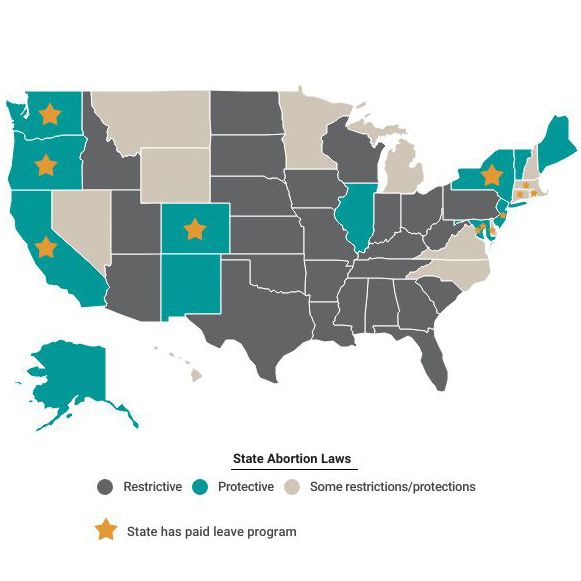The following is the 2023 archived version of the Paid Leave Means a Stronger Nation page. To see the latest version released February 2024, click here.
Most working people in the United States – 75 percent, or 105 million people nationwide – do not have paid family leave through their jobs. Just 12 states have their own paid family and medical leave programs. Everywhere else, the lack of paid leave exacerbates other economic and care challenges – from the rising cost of living, to a scarcity of reproductive and maternal health care, to an aging population, with devastating costs for workers and their families, public health and our economy.
Our new state-by-state analysis highlights the significant and growing need for a national paid family and medical leave law that covers workers in all 51 states (including D.C.).
The United States’ paid leave crisis is especially acute in light of the overturning of Roe v. Wade last year. States that have taken the lead on providing paid leave are also among the most protective of abortion rights, while no state that has banned or is likely to ban abortion provides paid leave. Learn more in our report, Threats on All Fronts: The Links Between the Lack of Abortion Access, Health Care and Workplace Equity.

The United States needs a common sense national paid leave program.
We recommend one that:
- includes all workers, no matter where they live or work or what kind of job they have;
- replaces enough income that workers at any income level can afford leave;
- provides enough time for workers to meet their care and health needs;
- covers the range of major needs workers face, including addressing their own health conditions, caring for seriously ill, injured or disabled family members and welcoming newborn, newly adopted or foster children;
- provides education and outreach to ease implementation for workers and small businesses; and
- has a sustainable funding source that is affordable for workers, employers and the government without harming other essential programs, such as Social Security or the Child Tax Credit.
National paid family and medical leave means a stronger economy, healthier families and businesses, and greater equality for all women and families.
Choose a state from the menu below for more on how the lack of national paid leave affects people in that state.
To learn more and explore other resources, visit NationalPartnership.org/PaidLeave.

